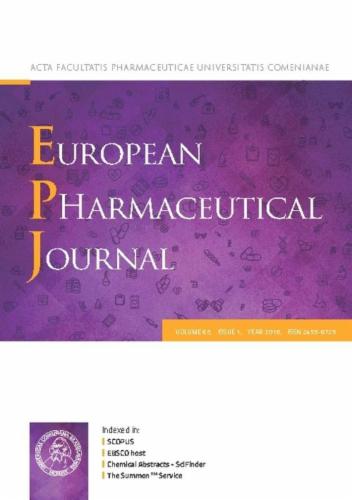静电纺丝法制备干燥纳米乳液配方。
IF 4.3
3区 医学
Q1 PHARMACOLOGY & PHARMACY
引用次数: 0
摘要
干眼病是一种多因素的疾病,其特征是泪膜稳态的丧失。在各种治疗方法中,应用含抗炎药物的眼用水包油纳米乳是最先进的治疗方法之一。然而,纳米乳液的液体性质限制了它们在眼表的停留时间。将纳米乳液转化为干燥的形式,使其在泪液中迅速分散,从而提高药物在眼表的保留率。本研究的目的是研究静电纺丝作为一种制备固体眼制剂的方法,该方法基于负载抗炎药羟苯乙酯的纳米乳剂。四种油与表面活性剂比例不同的纳米乳液被掺入基于聚乙烯氧化物、poloxam188和Soluplus®的亲水性纳米纤维中。干燥后的纳米乳液以纳米纤维的形式与水介质接触时很容易分散,导致纳米大小的液滴分散,其平均大小与初始纳米乳液的平均液滴大小相当。一项流变学研究揭示了分散的纳米纤维的主要弹性行为,这表明干燥的纳米乳液在泪液中分散后在眼表形成弱凝胶。用人类角膜分层上皮的3D HCE-T模型证实了单次和多次使用后纳米纤维形式的干燥纳米乳的生物相容性,这表明这种创新的固体眼制剂可能代表了治疗干眼病的新方法。本文章由计算机程序翻译,如有差异,请以英文原文为准。

Preparation of dried nanoemulsion formulation by electrospinning
Dry eye disease is a multifactorial condition characterized by a loss of homeostasis of the tear film. Among the various treatment approaches, the application of ophthalmic oil-in-water nanoemulsions with incorporated anti-inflammatory drugs represents one of the most advanced approaches. However, the liquid nature of nanoemulsions limits their retention time at the ocular surface. Transforming the nanoemulsions into a dry form that would disperse rapidly in the tear fluid would improve the retention of the drug at the ocular surface. The aim of this study was to investigate electrospinning as a method for the preparation of a solid eye preparation based on nanoemulsion loaded with the anti-inflammatory drug loteprednol etabonate. Four nanoemulsions differing in oil-to-surfactant ratios were incorporated in hydrophilic nanofibers based on polyethylene oxide, poloxamer 188, and Soluplus®. The dried nanoemulsions in the form of nanofibers dispersed readily on contact with aqueous medium, resulting in a dispersion of nanometre-sized droplets with average size comparable to the average droplet size of the initial nanoemulsions. A rheological study revealed the predominant elastic behavior of the dispersed nanofibers, which indicates the formation of a weak gel after the dispersion of the dried nanoemulsion in tear fluid at the ocular surface. The biocompatibility of the dried nanoemulsions in the form of nanofibers after a single and multiple-dose application was confirmed using the 3D HCE-T model of the stratified epithelium of the human cornea, suggesting that this innovative solid eye preparation could represent a new approach to the treatment of dry eye disease.
求助全文
通过发布文献求助,成功后即可免费获取论文全文。
去求助
来源期刊
CiteScore
9.60
自引率
2.20%
发文量
248
审稿时长
50 days
期刊介绍:
The journal publishes research articles, review articles and scientific commentaries on all aspects of the pharmaceutical sciences with emphasis on conceptual novelty and scientific quality. The Editors welcome articles in this multidisciplinary field, with a focus on topics relevant for drug discovery and development.
More specifically, the Journal publishes reports on medicinal chemistry, pharmacology, drug absorption and metabolism, pharmacokinetics and pharmacodynamics, pharmaceutical and biomedical analysis, drug delivery (including gene delivery), drug targeting, pharmaceutical technology, pharmaceutical biotechnology and clinical drug evaluation. The journal will typically not give priority to manuscripts focusing primarily on organic synthesis, natural products, adaptation of analytical approaches, or discussions pertaining to drug policy making.
Scientific commentaries and review articles are generally by invitation only or by consent of the Editors. Proceedings of scientific meetings may be published as special issues or supplements to the Journal.

 求助内容:
求助内容: 应助结果提醒方式:
应助结果提醒方式:


